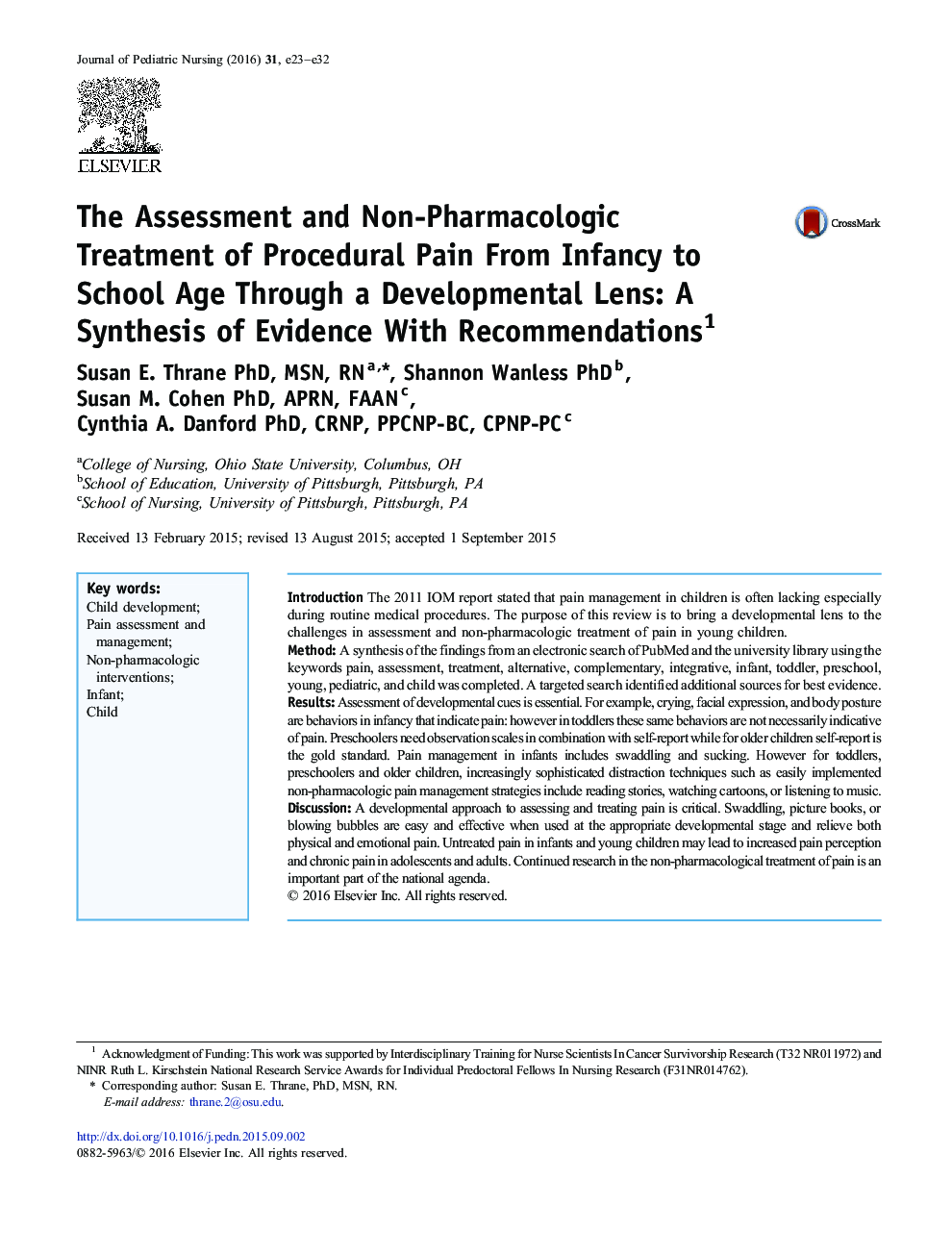| کد مقاله | کد نشریه | سال انتشار | مقاله انگلیسی | نسخه تمام متن |
|---|---|---|---|---|
| 2665587 | 1140705 | 2016 | 10 صفحه PDF | دانلود رایگان |
• Pain is often untreated during routine medical procedures in pediatric patients
• Using a developmental approach to assessment and non-pharmacological treatment can lead to better outcomes
• Parental attachment is an important consideration when treating infants
• Use of developmental stage is crucial for non-pharmacologic treatment in children
IntroductionThe 2011 IOM report stated that pain management in children is often lacking especially during routine medical procedures. The purpose of this review is to bring a developmental lens to the challenges in assessment and non-pharmacologic treatment of pain in young children.MethodA synthesis of the findings from an electronic search of PubMed and the university library using the keywords pain, assessment, treatment, alternative, complementary, integrative, infant, toddler, preschool, young, pediatric, and child was completed. A targeted search identified additional sources for best evidence.ResultsAssessment of developmental cues is essential. For example, crying, facial expression, and body posture are behaviors in infancy that indicate pain: however in toddlers these same behaviors are not necessarily indicative of pain. Preschoolers need observation scales in combination with self-report while for older children self-report is the gold standard. Pain management in infants includes swaddling and sucking. However for toddlers, preschoolers and older children, increasingly sophisticated distraction techniques such as easily implemented non-pharmacologic pain management strategies include reading stories, watching cartoons, or listening to music.DiscussionA developmental approach to assessing and treating pain is critical. Swaddling, picture books, or blowing bubbles are easy and effective when used at the appropriate developmental stage and relieve both physical and emotional pain. Untreated pain in infants and young children may lead to increased pain perception and chronic pain in adolescents and adults. Continued research in the non-pharmacological treatment of pain is an important part of the national agenda.
Journal: Journal of Pediatric Nursing - Volume 31, Issue 1, January–February 2016, Pages e23–e32
